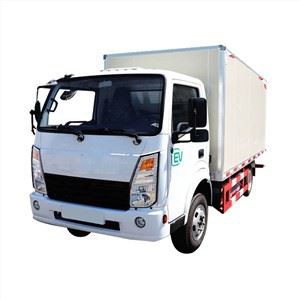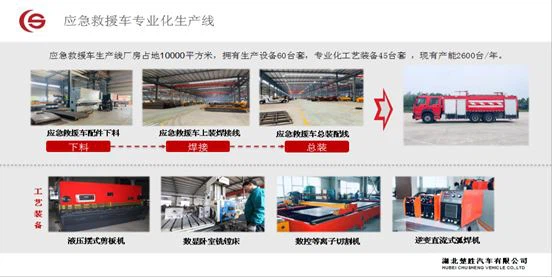How Wide is a Garbage Truck? Understanding Garbage Truck Dimensions

Understanding the dimensions of a garbage truck is important for several reasons, including urban planning, waste management, and road safety. In this article, we will delve into the typical size of garbage trucks, factors affecting their dimensions, and practical implications for communities and drivers alike.
1. Overview of Garbage Trucks
Garbage trucks are specialized vehicles designed to collect and transport waste materials. They come in various sizes and styles depending on the type of waste they are designed to handle, including residential, commercial, and industrial waste. The width of a garbage truck is a crucial dimension that affects its maneuverability and ability to navigate city streets.
2. Typical Dimensions of Garbage Trucks
2.1 Standard Widths
Generally, the width of a standard garbage truck ranges between 8 to 10 feet (2.4 to 3.05 meters). The following table summarizes the standard dimensions:
| Type of Garbage Truck | Width (Feet) | Width (Meters) |
|---|---|---|
| Residential Garbage Truck | 8 – 9 | 2.4 – 2.7 |
| Commercial Garbage Truck | 8 – 10 | 2.4 – 3.05 |
| Roll-Off Garbage Truck | 8 – 10 | 2.4 – 3.05 |
2.2 Variability in Width
The width can vary based on several factors:
- Type of truck: Different designs and purposes affect width.
- Manufacturer: Each manufacturer has specific models with custom dimensions.
- Additional features: Trucks with extra compaction equipment may be wider.

3. Factors Influencing Truck Width
3.1 Design and Model Variations
Different types of garbage trucks are designed for specific functions. For instance, front-loading trucks tend to be wider than rear-loading models due to the compaction equipment and lifting arms.
3.2 Regulatory Standards
Each state or country may have regulations governing the maximum width of vehicles on public roads, which can affect garbage truck designs.
3.3 Purpose of Use
Commercial garbage trucks used in urban areas where space is limited may be designed more compactly, whereas trucks used in rural areas may have wider frames to accommodate larger loads.
4. Understanding the Impact of Width on Operations
4.1 Maneuverability
A wider garbage truck can pose challenges in tight urban environments, making it difficult to navigate narrow streets and tight turns.
4.2 Parking Considerations
Parking regulations often require specific spacing. Wider trucks may need designated parking bays suitable for their dimensions, particularly in residential areas.
5. Practical Tips for Drivers

5.1 Navigating Tight Spaces
When driving a garbage truck, being aware of the vehicle’s width is essential. Always consider:
- Adjusting mirrors to eliminate blind spots.
- Utilizing spotters in congested areas.
- Practicing slow-speed maneuvers around corners.
5.2 Planning Routes
Drivers should familiarize themselves with their routes to identify potentially challenging areas ahead of time. Avoid roads that are too narrow or have low overheads.
6. Case Studies of Garbage Truck Width in Different Cities
6.1 Urban Areas
In densely populated cities like New York, garbage trucks are often designed to fit the city’s narrow streets. The city also implements specific width regulations to reduce congestion.
6.2 Rural Areas
In contrast, wider models are common in rural settings, where roads are generally wider, allowing for larger vehicles and loads.
7. Environmental Considerations
7.1 Fuel Efficiency and Width
The width and overall size of a garbage truck can influence fuel efficiency. Generally, larger trucks with more payload capacity may consume more fuel.
7.2 Waste Management Efficiency
Wider trucks often collect more waste in fewer trips, potentially reducing the frequency of operational runs and associated emissions.
8. Trends in Garbage Truck Design
8.1 Evolution of Technology
Modern garbage trucks are increasingly being equipped with technology that allows for better maneuverability and efficiency, such as adaptive steering.
8.2 Future of Garbage Trucks
As cities grow and demand for efficient waste management increases, we can expect ongoing changes in the design and dimensions of garbage trucks, possibly focusing on hybrid or electric models to reduce environmental impact.

9. Frequently Asked Questions (FAQs)
9.1 What is the average width of a garbage truck?
The average width of a garbage truck typically ranges from 8 to 10 feet (2.4 to 3.05 meters).
9.2 Are all garbage trucks the same width?
No, the width can vary depending on the type of truck and its intended use.
9.3 Can garbage trucks operate on narrow streets?
Yes, but wider trucks may face challenges in navigating narrow streets, which may require careful driving and planning.
9.4 How do regulations affect garbage truck dimensions?
Regulatory standards might dictate maximum vehicular width, which can influence garbage truck designs.
9.5 What types of garbage trucks are there?
There are various types such as residential trucks, commercial trucks, and roll-off trucks, and each may have different widths and features.
9.6 Is it safer to drive a narrower garbage truck?
Narrower trucks may have advantages in terms of maneuverability and road safety in congested areas, but other factors such as weight and design also play essential roles.
